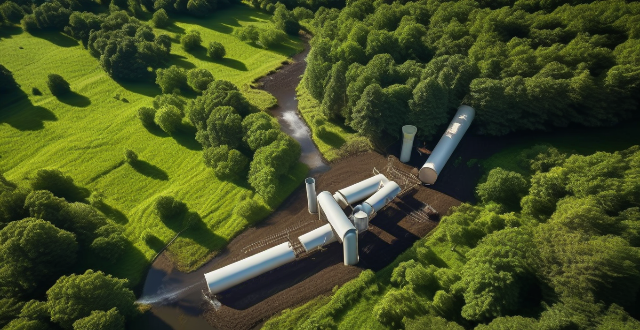Deforestation and forest degradation significantly contribute to global warming by reducing carbon sequestration, increasing greenhouse gas emissions, altering the albedo effect, causing biodiversity loss, impacting the water cycle, triggering feedback loops, and posing mitigation and adaptation challenges. These processes also have economic and social impacts, such as displacement of indigenous peoples. Efforts to reduce deforestation and promote sustainable forest management are crucial in combating global warming.

The Role of Deforestation and Forest Degradation in Global Warming
Deforestation and forest degradation are significant contributors to global warming, primarily through their impact on the carbon cycle. Here's a detailed breakdown of how these processes affect our planet:
Carbon Sequestration Loss
- Loss of Carbon Sinks: Trees absorb carbon dioxide (CO2) from the atmosphere during photosynthesis, making forests vital carbon sinks. When forests are cleared or degraded, this capacity is reduced, leading to higher levels of atmospheric CO2.
Greenhouse Gas Emissions
- Direct Emissions: Trees that are cut down and left to decay or burned release the carbon they have stored back into the atmosphere as CO2.
- Soil Disturbance: Forest clearance often involves soil disturbance, which can release additional greenhouse gases like nitrous oxide and methane.
Albedo Effect
- Darker Surfaces: Forests are generally darker than the grasslands or farmlands that may replace them. Darker surfaces absorb more sunlight and heat, which can contribute to local warming effects.
Biodiversity Loss
- Reduced Carbon Uptake by Ecosystems: As biodiversity decreases due to deforestation, the ability of ecosystems to take up and store carbon is also diminished.
Water Cycle Impact
- Changes in Evapotranspiration: Forests play a key role in the water cycle through evapotranspiration. Deforestation can alter this process, potentially affecting regional climate patterns and precipitation.
Feedback Loops
- Ice-Albedo Feedback: In high-latitude regions, deforestation can lead to less snow accumulation on darkening landscapes, reducing albedo (reflectivity) and thus contributing further to warming.
- Carbon Release from Thawing Permafrost: In boreal forests, warming temperatures can thaw permafrost, releasing large amounts of stored carbon, which in turn exacerbates global warming.
Mitigation and Adaptation Challenges
- Reduced Resilience: Forests provide resilience to climate change by acting as buffers against extreme weather events. Their loss makes both natural systems and human settlements more vulnerable to these events.
Economic and Social Impacts
- Displacement of Indigenous Peoples: Deforestation often forces indigenous peoples from their lands, disrupting their carbon-neutral lifestyles and sometimes leading to relocation to urban areas where carbon emissions are typically higher.
Summary Points
- Increased Atmospheric CO2: Less carbon sequestration and more direct emissions due to tree loss.
- Altered Land Surfaces: Changes in albedo and water cycles from deforestation.
- Biodiversity Decline: Reduced ecological complexity diminishes carbon uptake across ecosystems.
- Feedback Loops: Deforestation triggers feedback mechanisms that accelerate warming.
- Societal Impacts: Economic and social disruptions also contribute indirectly to increased emissions.
By understanding these interconnected processes, it becomes clear that efforts to reduce deforestation and promote sustainable forest management are crucial in the fight against global warming.